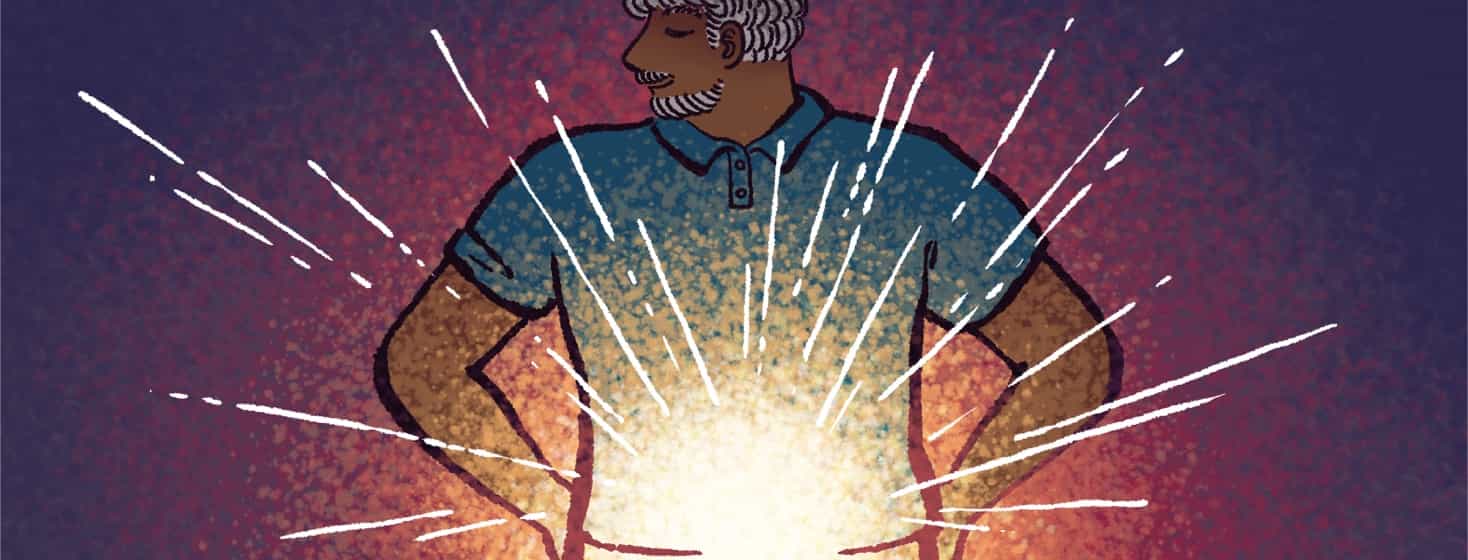Pelvic Floor Exercises and Prostate Cancer
Becca, a pelvic floor physical therapist, talks about the importance of the pelvic floor muscles – including their role in urinary control – and what people with prostate cancer can do to lessen the impact on them after treatment. Have a specific question for Becca? Ask it in our forum on pelvic floor therapy.
What is the role of the pelvic floor muscles?
The pelvic floor muscles are located in the saddle region of your body. These muscles must lengthen or open during 3 activities: going to pee, having a bowel movement, or during the process of arousal and ejaculation.
The rest of the time, these muscles remain in a shortened position and are active throughout the day to hold up your abdominal and pelvic organs, to keep you from leaking urine, and even to prevent farts during a meeting at work. They have a very important job, and yet you likely never think about them.
How do they relate to prostate cancer?
When someone undergoes prostate removal or radiation treatment for prostate cancer, the pelvic floor muscles can have endured an assault, because either the prostate has been surgically removed or radiation has been targeted directly at the pelvis.
This can result in 2 things: the muscles of the pelvic floor can go into spasm, and as pelvic floor physical therapists, we often see men with very tight pelvic floors after prostate cancer treatment. A similar response can be that the pelvic floor muscles become weakened by the trauma of surgery or radiation.
One of the most common scenarios after prostate cancer treatment can be that the pelvic floor muscles will be both tight and weak. Imagine that you fractured your elbow and are stuck in a sling for 1 month. Your biceps muscle will become short and tight. But it will also become weak at the same time. This is common in men in their saddle regions when they receive treatment for prostate cancer.
What can men do before treatment?
Men can go to a pelvic floor physical therapist for 1 or 2 visits before their treatment, and this can help them get in touch with their pelvic floor muscles. If that isn't an option, I have found that talking about this issue is as effective as finding a pelvic floor PT. Getting involved in a support group like this and talking to others who have been through this can be incredibly valuable.
What question I hear most
"When will I start to notice improvement in urinary leakage and erectile dysfunction?" I hear this question a lot. I've found that there can be a 2-year window of recovery for men following treatment of prostate cancer. This means that there can be 730 days after a procedure wherein recovery of urinary incontinence and erectile dysfunction is possible. Two years is a really long time!
Furthermore, I have treated men with prostatectomies and radiation treatment dated over 2 decades in the past, and they noticed improvement in their symptoms, too. The body is miraculous in its ability to heal and learn new ways to do simple things. One never knows when improvements can be noticed. The point is, don't put a time limit on what the human body can do!
How easy is it to learn pelvic floor PT?
This depends on the individual. Some people know exactly how to activate their pelvic floor muscles (via Kegel exercises). Other people know how to relax their pelvic floor muscles. Both activation and relaxation of the pelvic floor muscles are necessary for urinary continence and satisfactory erections.
People undergoing prostate cancer treatment need to be able to activate and relax their muscles. Remember the elbow fracture mentioned earlier? The biceps must lengthen first and then get stronger. Both are necessary to return to full function.
I often treat men with prostate cancer for only a few visits. They are given an arsenal of techniques to allow them to achieve their goals. And these men are warriors – they leave me and go out in the world. Every day when I drive home from work, I know that they got this. So yeah, they can do this at home.

Join the conversation